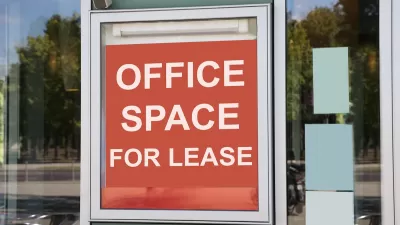Arts programs across America have not been immune to the effects of the Great Recession. With institutions across the country struggling financially, Terry Teachout looks at whether the voter-approved bailout of the DIA can serve as a national model.
The Atlanta Symphony's $20 million debt crisis, the closing of Palm Beach's Florida Stage, and the gutting of the New York City Opera, are just some examples of America's struggling arts environment. What can these and other institutions learn from the 10-year-long dedicated property-tax increase recently approved by voters in three counties served by the DIA?
According to Teachout, "To begin with, the DIA showed it was serious about money by slashing
every thimbleful of fat out of its budget. It simultaneously showed
itself to be responsive to the wishes of its patrons by undertaking an
imaginative reinstallation of the museum's permanent collection that was
both user-friendly and artistically responsible. Then, when the DIA
asked for public funding, it sweetened the pill with an equally
imaginative free-admission plan that targeted not just Detroiters but
local suburbanites."
"Contrast the DIA's approach with that of the Atlanta Symphony," writes Teachout, "which
is opting for innovation-free budget cutting instead of root-and-branch
institutional transformation."
"Cutting is not enough. You also have to think creatively and be willing
to take risks, as the DIA did when it asked the people of Detroit and
its suburbs to agree to a tax increase."
FULL STORY: Why Arts Managers Short of Cash Are Looking at Detroit

Trump Administration Could Effectively End Housing Voucher Program
Federal officials are eyeing major cuts to the Section 8 program that helps millions of low-income households pay rent.

Planetizen Federal Action Tracker
A weekly monitor of how Trump’s orders and actions are impacting planners and planning in America.

Ken Jennings Launches Transit Web Series
The Jeopardy champ wants you to ride public transit.

Washington Legislature Passes Rent Increase Cap
A bill that caps rent increases at 7 percent plus inflation is headed to the governor’s desk.

From Planning to Action: How LA County Is Rethinking Climate Resilience
Chief Sustainability Officer Rita Kampalath outlines the County’s shift from planning to implementation in its climate resilience efforts, emphasizing cross-departmental coordination, updated recovery strategies, and the need for flexible funding.

New Mexico Aging Department Commits to Helping Seniors Age ‘In Place’ and ‘Autonomously’ in New Draft Plan
As New Mexico’s population of seniors continues to grow, the state’s aging department is proposing expanded initiatives to help seniors maintain their autonomy while also supporting family caregivers.
Urban Design for Planners 1: Software Tools
This six-course series explores essential urban design concepts using open source software and equips planners with the tools they need to participate fully in the urban design process.
Planning for Universal Design
Learn the tools for implementing Universal Design in planning regulations.
Heyer Gruel & Associates PA
Ada County Highway District
Institute for Housing and Urban Development Studies (IHS)
City of Grandview
Harvard GSD Executive Education
Toledo-Lucas County Plan Commissions
Salt Lake City
NYU Wagner Graduate School of Public Service





























